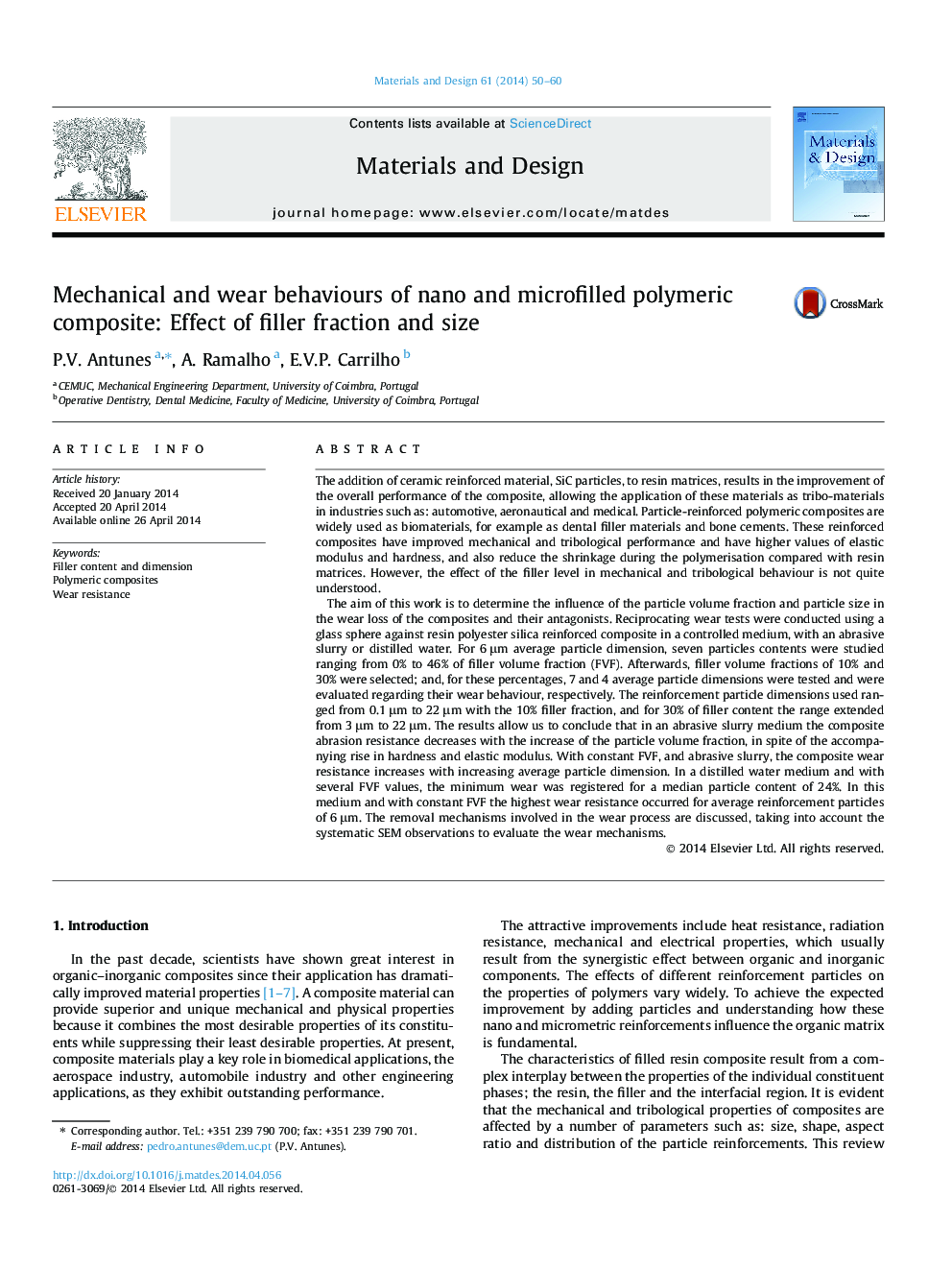| کد مقاله | کد نشریه | سال انتشار | مقاله انگلیسی | نسخه تمام متن |
|---|---|---|---|---|
| 829131 | 1470336 | 2014 | 11 صفحه PDF | دانلود رایگان |
• Relation between the filler volume fraction/particle size & mechanical properties.
• Relation between wear resistance and mechanical properties and the contact media.
• Wear performance comparison of micro and nanofiller in: sliding and abrasive media.
The addition of ceramic reinforced material, SiC particles, to resin matrices, results in the improvement of the overall performance of the composite, allowing the application of these materials as tribo-materials in industries such as: automotive, aeronautical and medical. Particle-reinforced polymeric composites are widely used as biomaterials, for example as dental filler materials and bone cements. These reinforced composites have improved mechanical and tribological performance and have higher values of elastic modulus and hardness, and also reduce the shrinkage during the polymerisation compared with resin matrices. However, the effect of the filler level in mechanical and tribological behaviour is not quite understood.The aim of this work is to determine the influence of the particle volume fraction and particle size in the wear loss of the composites and their antagonists. Reciprocating wear tests were conducted using a glass sphere against resin polyester silica reinforced composite in a controlled medium, with an abrasive slurry or distilled water. For 6 μm average particle dimension, seven particles contents were studied ranging from 0% to 46% of filler volume fraction (FVF). Afterwards, filler volume fractions of 10% and 30% were selected; and, for these percentages, 7 and 4 average particle dimensions were tested and were evaluated regarding their wear behaviour, respectively. The reinforcement particle dimensions used ranged from 0.1 μm to 22 μm with the 10% filler fraction, and for 30% of filler content the range extended from 3 μm to 22 μm. The results allow us to conclude that in an abrasive slurry medium the composite abrasion resistance decreases with the increase of the particle volume fraction, in spite of the accompanying rise in hardness and elastic modulus. With constant FVF, and abrasive slurry, the composite wear resistance increases with increasing average particle dimension. In a distilled water medium and with several FVF values, the minimum wear was registered for a median particle content of 24%. In this medium and with constant FVF the highest wear resistance occurred for average reinforcement particles of 6 μm. The removal mechanisms involved in the wear process are discussed, taking into account the systematic SEM observations to evaluate the wear mechanisms.
Journal: Materials & Design - Volume 61, September 2014, Pages 50–60
